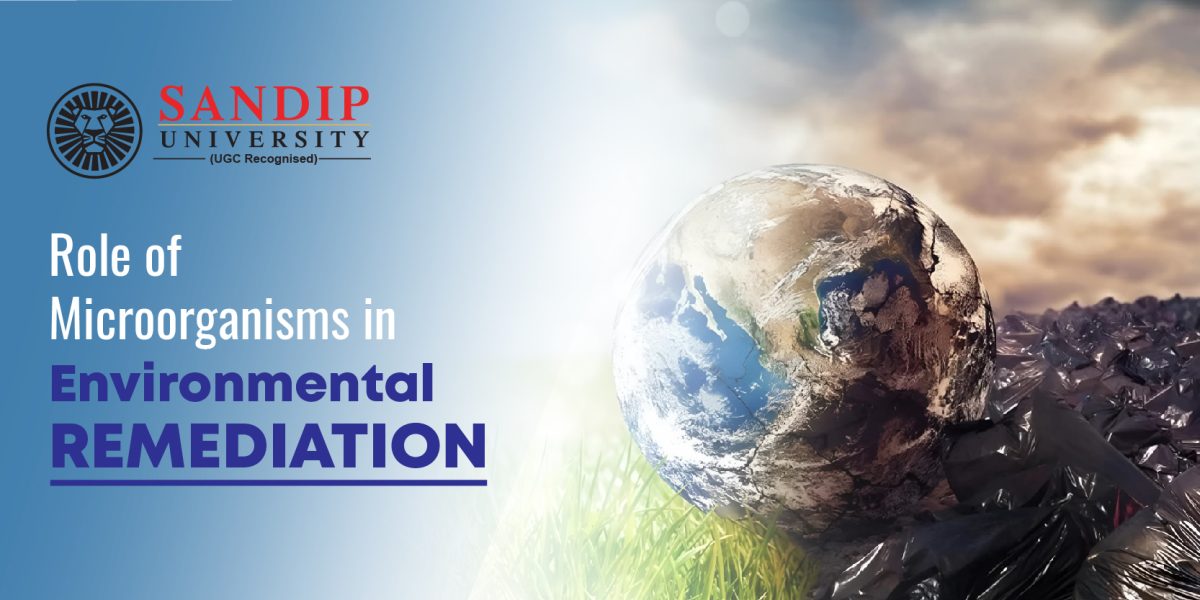In the ongoing battle against environmental pollution, scientists are increasingly turning to nature’s superheroes: microorganisms. These tiny organisms, invisible to the naked eye, possess remarkable abilities to break down pollutants and restore balance to ecosystems. Some of the best science colleges in Nashik are conducting groundbreaking research in environmental remediation to study the role of microorganisms in the remediation process.
In this blog post, we will explore the fascinating world of microbial environmental remediation, drawing on recent studies and groundbreaking research to illuminate innovative techniques and promising advancements in this field.
What is Microbial Environmental Remediation?
Microbial environmental remediation, also known as bioremediation, harnesses the metabolic capabilities of microorganisms to degrade or transform various contaminants in soil, water, and air. Unlike traditional cleanup methods, which often involve costly and invasive processes, bioremediation offers a sustainable and environmentally friendly approach to pollution management.
Recent Advances in Microbial Bioremediation
Recent studies have demonstrated the potential of microbial bioremediation to address a wide range of environmental challenges. For example, research published in the journal Environmental Science & Technology has shown that certain bacteria can degrade toxic organic pollutants, such as polycyclic aromatic hydrocarbons (PAHs), found in contaminated soil and water. By harnessing the metabolic pathways of these bacteria, scientists can facilitate the breakdown of harmful compounds into less toxic byproducts
Furthermore, advancements in genetic engineering techniques have expanded the toolkit of bioremediation researchers. For instance, a study published in Nature Biotechnology describes how scientists have engineered microorganisms with enhanced capabilities for breaking down specific pollutants, leading to more efficient and targeted cleanup strategies.
Applications of Microbial Bioremediation
Microbial bioremediation has been successfully applied to a variety of environmental contamination scenarios. In one notable example, a consortium of bacteria was used to remediate a large-scale oil spill in the Gulf of Mexico following the Deepwater Horizon disaster. Through a process known as biodegradation, these bacteria consumed the oil and degraded it into harmless compounds, mitigating the environmental impact of the spill.
Additionally, microbial bioremediation shows promise for addressing emerging contaminants, such as pharmaceuticals and personal care products, which pose challenges to traditional treatment methods. Research published in Environmental Pollution highlights the potential of microbial communities in wastewater treatment systems to degrade pharmaceutical residues, offering a sustainable solution to this growing problem.
Challenges and Future Directions in this Field
While microbial bioremediation holds great potential, it is not without its challenges. Factors such as environmental conditions, nutrient availability, and microbial competition can influence the effectiveness of bioremediation processes. Furthermore, the long-term impacts of microbial remediation techniques on ecosystem health and biodiversity require careful consideration.
Looking ahead, future research in microbial bioremediation will focus on addressing these challenges and expanding the scope of application. Advances in metagenomics, transcriptomics, and other omics technologies will provide insights into the complex interactions between microorganisms and their environment, guiding the development of more targeted and efficient bioremediation strategies.
Conclusion
Microbial environmental remediation offers a powerful tool for addressing environmental pollution and restoring ecosystems impacted by human activities. By harnessing the natural abilities of microorganisms, scientists can develop sustainable and cost-effective solutions to some of the most pressing environmental challenges of our time.
As research continues to advance, microbial bioremediation will play an increasingly important role in safeguarding the health of our planet for future generations. In this blog post, we have explored the exciting world of microbial environmental remediation, highlighting recent studies and groundbreaking research that demonstrate the potential of microorganisms to clean up our environment. As we continue to unlock the secrets of microbial bioremediation, we move closer to a future where pollution is no match for the power of nature’s cleanup crew.

